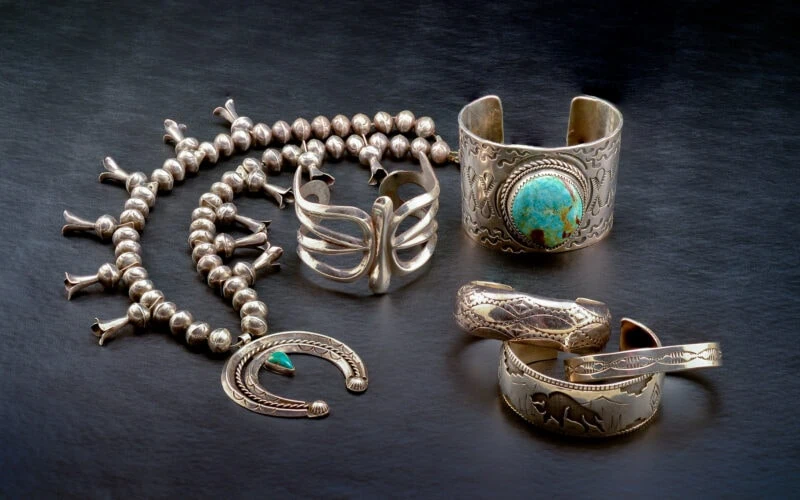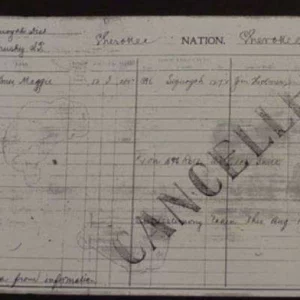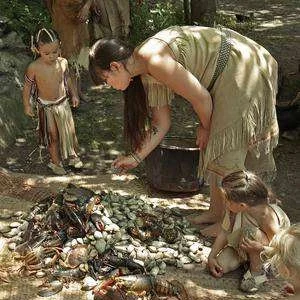If a fashion item is for sale to the open public, and one wears it publicly, it is a clear demonstration of appreciation, and credit is much appreciated, but not required. Most artists who make jewelry, or clothing, build close and personal relationships with their clients. It is perfectly okay to purchase t-shirts, stickers, hoodies, leggings, boots, moccasins, jewelry, and other unique Native-made products, but to use those materials to advance a cause when one is not from the heritage is also appropriation.
It is perfectly okay for anyone to purchase, gift, and wear Native-produced items such as jewelry, t-shirts, hoodies, leggings, jackets, hats, and other clothing items in public. Hundreds of thousands of people do so at the annual Santa Fe Indian Market.
New Wave of Indigenous Representation Brings New Enthusiasm to Native Culture, Art and Products
The last several years have brought unprecedented Indigenous cultural representation to worldwide audiences through mainstream media, and with that comes increased visibility to Native arts, culture, and products. Now, more than ever, Native culture is celebrated and seen in spaces for the first time, placing Indigenous fashion and expression in the mainstream.
Indigenous creatives are partnering with luxurious fashion brands such as Louis Vuitton and Ralph Lauren, and many others are using their opportunities to uplift and support Indigenous designers. Native creatives such as Louie Gong (founder and former CEO of 8th Generation), Elias Not Afraid, Jamie Okuma, Lenise Omeasso, and others are being showcased in international fashion magazines and brought on the red carpet, giving Indigenous representation through fashion and art its due.
Indian Arts and Crafts Act
There has long been an interest in Native culture by others, and that has included acts of theft including fraudulent representation of Native-produced items such as jewelry, rugs, pottery, clothing, and other cultural items. The widespread misrepresentation of Native cultural items has led largely to the passing of the Indian Arts and Crafts Act, which has multiple amendments and makes it illegal in the United States and its territories to produce and sell “Indian products” if you are not enrolled in a federally or state-recognized tribe. The Indian Arts and Crafts Act is one of the few federal Indian laws that has protections for state-recognized tribes, where enrolled members of state-recognized tribes can make and sell “Indian products” like those from federally recognized tribes.
What classifies as an “Indian product” is currently under review by the Bureau of Indian Affairs (BIA), where the agency may add more regulated mediums of what constitutes an “Indian product”. Items such as food products like beer or steaks as well as protections for Native Hawaiians are considered to be added to the protected mediums, but there is no official deadline when, or if, the BIA will decide to add the mediums according to Asst. Secretary of Interior Bryan Newland.
A non-Indian can make and sell products in the style of Indian art or craft products only if the seller does not falsely suggest to consumers that the products have been made by an Indian (defined in the law as a person enrolled in a state or a federally recognized tribe). In other words, the law states that if an item is in the style of Indian arts or crafts, the seller must state if the product was made by a person enrolled in a state of federally recognized tribe, or not. Many don’t abide by the law, though because enforcement is rare and usually only includes a fine.
Cultural Appropriation In Fashion
Because fashion, or fashion clothing such as garments, tee-shirts, shorts, or other contemporary clothing items isn’t a protected medium, and many artists do not have their materials copyrighted, there is no official enforcement to the practice of taking images and recreating them for sale. This scenario isn’t new though, and presents the question of cultural appropriation versus cultural appreciation.
Many creatives are launching businesses, and posting their creations on social media only to find out that knock-off businesses copy, reproduce, and sell items of similar look and fashion online with no mention of the creation of the item. Theft is appropriation.
What Is Cultural Appropriation?
The main difference between cultural appropriation and cultural appreciation is that one demans and dishonors, and the other honors and uplifts.
If items are influenced by Native culture and then the dominant culture adopts an item’s element, such as an image or design, and makes it theirs by way of selling it, it’s appropriation. Cultural appropriation can include the exploitation of cultural traditions, dance steps, fashion, symbols, language, and music.
Recently, Pharrell Williams released a new fashion line for Louis Vuitton, which has been branded as a fusion of American and Native American influences. His collaboration featured several Native designers including Lauren Good Day, Trae Littlesky, Jocy Littlesky, and Kendra Red House with some of the collections featuring floral and geometric designs found on scarves, bags, and blankets worn on the Paris fashion runway.
The artists who collaborated with Williams were not mentioned in any press materials, the delegation of Native singers, dancers, and models was not mentioned during the show, and there is no mention of the artists on the fashion website. There is nothing mentioned on the website about Indigenous collaborations, Native collaborations, Native inspired, or the like.
Not everyone agreed with Williams's partnership. He was previously under scrutiny from his Elle Magazine cover appearance in 2014, where he was photographed wearing a seemingly Northern Plains headdress (with painted ostrich feathers). He soon apologized for his actions and has continued cultivating partnerships with Indigenous creatives in the Dakotas.
Norma Baker-Flyinghorse, a celebrated Dakota and Hidatsa fashion designer whose fashion line Red Berry Woman has had several appearances on red carpet events, questioned his motives by phrasing, “Encourage each other to rise but also encourage each other to be mindful of those who claim they want to lift you up. Ask yourself are they doing it correctly or are they doing it for profit?”
“If Pharrell Williams wants to give Native Americans a platform at this level in the fashion world so we can represent who we truly are and where we come from, then he needs to sit down, pay attention, and give all creative control over to us otherwise leave our culture alone,” Baker Flying Horse said. “His collection is an insult and a slap in the face.”
Since the Louis Vuitton clothing items are not made by Native or Indigenous people, they’re not Native-made products, but since fashion clothing and accessories are not protected under the Indian Arts and Crafts Act the company is not in violation of the law. The items are marketed as “Native inspired”, which is a fancy marketing ploy often used to dupe buyers into that they’re buying an authentic Native item. Most non-Native people are unfamiliar with federal Indian laws, let alone that copying their arts and crafts and selling them is illegal.
The collaboration with Ralph Lauren and Naomi Glasses, a seventh-generation Diné (Navajo) textile artist and designer, is much different. Glasses is predominantly featured on the clothing items she designed and is listed in full marketing materials on their website. While the products are not Native-made, they are Native-inspired and include elements of the artist and inspirations that are expressed in the designs of the clothing item. The launch of the Polo Ralph Lauren x Naiomi Glasses collection also featured all Native people including some of Glasses’ family, Quanah Parker, and Jhane Myers. In addition, the collaboration also comes with a financial arrangement for the community. A percentage of sales from the Polo Ralph Lauren x Naiomi Glasses collection will benefit Change Labs, a Native-led nonprofit organization focused on fostering small business development in Navajo and Hopi communities.
Appropriation vs Appreciation
While one doesn’t question if eating Indigenous foods makes one Indigenous, wearing clothing or jewelry does. For example, if one is eating an Indian taco the question of whether the person is Indian, Native, or Indigenous, an observer doesn’t question if the person is from that heritage, just like any other person eating sushi. However, what one wears is often linked to one’s personal and cultural identity.
Wearing a headdress if one is non-Native is appropriation because a non-Native person would not get permission to wear it in an official capacity. Wearing a Halloween costume of “Indians” is appropriation. Taking clothing and dress, and making it as a mass-produced costume made in China is appropriation. Any items made by a non-Native that features Native and Alaskan Native images, styles, materials, and techniques and then sold is appropriation.
If a fashion item is for sale to the open public, and one wears it publicly, it is a clear demonstration of appreciation, and credit is much appreciated, but not required. Most artists who make jewelry, or clothing, build close and personal relationships with their clients. It is perfectly okay to purchase t-shirts, stickers, hoodies, leggings, boots, moccasins, jewelry, and other unique Native-made products, but to use those materials to advance a cause when one is not from the heritage is also appropriation.
It is perfectly okay for anyone to purchase, gift, and wear Native-produced items such as jewelry, t-shirts, hoodies, leggings, jackets, hats, and other clothing items in public. Hundreds of thousands of people do so at the annual Santa Fe Indian Market.
However, using those same items to legitimize that one is Indigenous, or adopted by Indigenous people, is misrepresenting and appropriating a culture.





Alana Miller
says:Appropriation includes mis-using, mocking, lying to others about origin, or producing fakes for financial gain. In short, if you are lying, cheating or stealing, bearing false witness, or being disrespectful for laughs or entertainment. Parody as serious commentary is a different thing– parody is even protected as fair use under copyright. The basic question always is: “why” are you doing this thing? Is it to be mean or hurtful? Of course that is wrong.
Respectful learning about a culture is appreciation. Following the norms for behavior in another culture is appreciation. Example: at a powwow in the dance circle, women are expected to wear shawls. When the MC calls for an intertribal song or a blanket song there nothing wrong with a white woman wearing a shawl when entering the dance floor. That is respectful, and different from a non-native girl in obviously fake Pocahontas costume pretending to be native and whooping it up. Recently, it has become quite the fad (in government especially) to acknowledge the regional heritage of native people who came before the Europeans in their communications. That is going to provoke curiosity about those people–who are they, where are they now? When you make an inquiry, and are rebuffed, being told that is not information for outsiders, that sends a double message. Respect needs to go both ways.
People of good heart and intention come in all backgrounds. Prejudice is a barrier that needs to be overcome for everyone to live lightly on the same land. Non-judgemental communication is the key to overcoming prejudice. The land speaks to everyone who takes the time to listen . How can we learn to listen to each other in the same appreciative and understanding manner?
Kerry
says:I enjoyed this article and very insightful. However, I’m a bit confused. Perhaps it’s just a question. My great grand mother was native. Is there a blood quantum to determine if I am committing cultural appropriation? I consider that part of my DNA part of my identity.
Chip Sitzman
says:Boy Scouts created and still use a tribal society that has been a mainstay of their recruitment and retention efforts. Specifically, both the Heart of America Council and the Pony Express Council in Missouri officially include their self created “Tribe of Mic O Say”. This includes special induction ceremonies, pow wows, ranks (Foxman, Brave, Warrior, Sachem, Medicine Man, Chief (with headdress), etc.). They have a program of ceremonies, dances, tribal attire, songs, stories based upon the culture and history of local indigenous tribes. They claim it is to honor native culture and history, and have even claimed that the person who started these tribes, H. Roe Bartle, was given honorary chieftain status by the Sioux, which they claim legitimizes the existence of their tribal program. They attempt to be authentic in what they wear, the ceremonies and practices, with tribal attire often being hand made. However, some attire is purchased from a scout owned store, with some of their merchandise purchased from Native artists or Native owned merchants. They claim what they do is not cultural appropriation, but instead is cultural appreciation. Are they correct in claiming that their tribes are not cultural appropriation?
Amos MIller
says:I am as white as the newly fallen snow and I am very old. My Mother was born and raised in Horse Mill holler in the hills of W. VA. I was raised to appreciate and respect all people and the beauty of their cultural heritage. Mother, based upon her ‘hill folk’ word-passed-down knowledge of our ancestors had learned that long ago, on the our English ancestors had taken a Native American in Virginia. As a boy, I had many 8×10 framed pictures of the Great Chiefs from several tribes; I read extensively about their cultures, ways, and skills, some of which I attempted, living in a rural environment, to replicate. When I was old enough to join Cub Scouts I did so with relish, and then Boy Scouts, learning more ‘lore’ and earning many useful merit badges, gaining increasing respect for those first on our land, from mounds to kivas, from survival, fishing, hunting, and reflection of my place in Nature. I even tried to make moccasins and made some fine loomed bead work. As an adult, I entered into the superficial life of a basic White man. As I matured, I dove deep into my across-the-board genealogy, focused only on ‘man and wife’, letting each discovery carried me as far back in time as possible before the road pettered out. Today, I have over 5,000 ancestors linked to my Father and Mother. Not one Native Among them! But I have one distinct and unbroken string on my Mother’s side reaching back from me 48 generations, and containing a few interesting historical individuals. So some time now, I have be reproducing/replicating Native American beaded knife sheaths from museum or magazine photos, for my own joy. Today, I honor and remember all of my Grandfathers (good or bad) and Grandmothers and I enjoy growing and burning my own sweetgrass braids, and am learning Lakhota, even though I live among the Pokagon Band of Potawatomi in Michigan. I bless and thank you all for sharing the wisdom and beauty of your Ancestors, which I carry in me every day.
KN
says:Good insight and comparisons, Darren! What kind of feedback have you been given about the “adopted by Indigenous people”? I think adopted children raised in an indigenous culture are no different than biological children.
D
says:Agree.
Drew M.
says:Great article and EVERYONE NON-NATIVE person should be reading this!!! ~Peace~